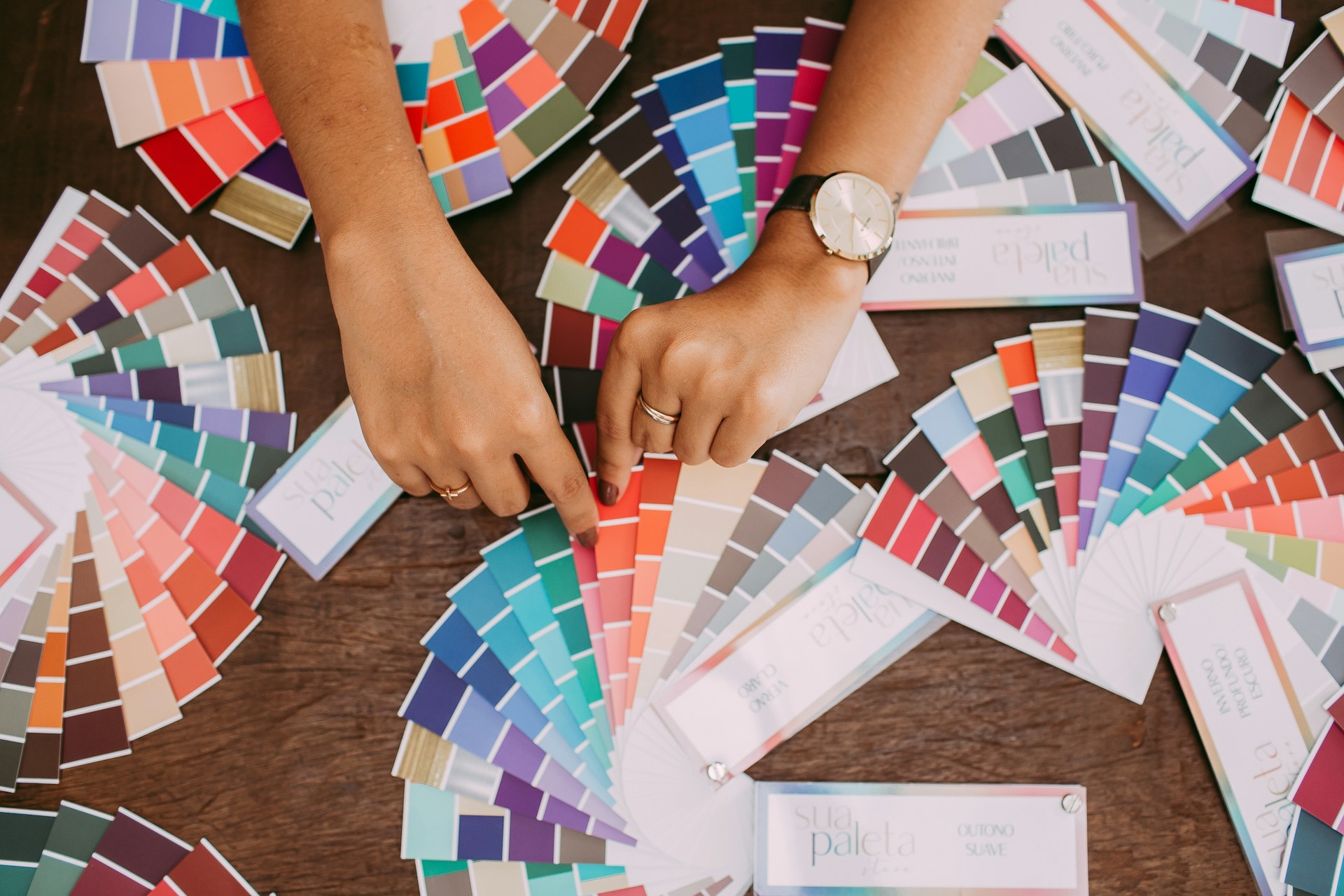In digital marketing, website conversions stand as the lifeblood of online success. Turning visitors into customers hinges on a well-crafted design that appeals to and persuades. Design is more than aesthetics; it’s a powerful tool for fostering trust and boosting conversions. As such, using visual elements to boost website conversions presents an alluring opportunity.
Understanding Conversions and Conversion Rates
Conversions, in the digital realm, refer to the desired actions users take on a website. These typically include making a purchase or filling out a form but can differ across campaigns and websites. Conversion rates, on the other hand, quantify the percentage of visitors who complete these actions. The formula for conversion rate calculation is straightforward: divide the number of conversions by the total number of visitors and multiply by 100. For instance, if a website had 1000 visitors and 50 made a purchase, the conversion rate would be 5%.
Needless to say, small improvements in this rate can lead to significant revenue boosts. For example, increasing the rate from 2% to 3% means a 50% increase in conversions. Subsequently, optimizing conversion rates is crucial for business success as it directly impacts the return on investment (ROI). Even modest enhancements in conversion rates can result in substantial financial gains, so they’re always worth the effort.
Factors Influencing Conversions
With our terms in order, ample factors influence a user’s decision to convert. Conversion Rate Optimization (CRO) hinges on these, seeking to best cater to them. In fact, using visual elements to boost website conversions is a core CRO tenet, as we’ll see next.
What are these factors, however? Trust, relevance, and user experience emerge as key conversion components based on the available conversion research. Trust allows users to perceive a website as secure and dependable, reducing inhibitions. Relevance in aligning content with user expectations is also central, as it reassures users of perceived value. Finally, User Experience (UX), covering elements like navigation and page loading speed, enhances their journey and primes them for conversion.
These aspects, intricately connected, are significantly influenced by effective web design. Here, visual elements emerge as catalysts in fortifying trust, ensuring relevance, and elevating overall user experience. So, by incorporating such elements, you can cultivate an environment conducive to conversions, foster positive connections with your audience, and achieve digital success.
Visual Elements and Their Impact on Conversions
Leveraging visual elements toward these ends, of course, requires understanding the psychology of persuasion. Fundamental psychological principles come into play, shaping how individuals interact with websites and influencing user behavior.
Here, consider a variety of design components that shape the user experience:
- Images: Compelling visuals, such as high-quality product images or relatable photos, captivate users’ attention and convey information effectively.
- Videos: Dynamic and engaging, videos provide an interactive experience, explaining products or services and fostering a deeper connection with the audience.
- Colors: Using strategic colors can evoke emotions and influence user perception, establishing brand identity and enhancing visual appeal.
- Fonts: Readability is crucial, and selecting appropriate fonts contributes to a user-friendly experience, ensuring that information is easily digestible.
Visual elements go beyond mere aesthetics, too. In fact, they actively enhance user engagement:
- Capture Attention: Visually appealing content captures users’ attention within seconds, encouraging them to explore further.
- Convey Information: Images and videos convey information quickly, reducing the cognitive load on users and facilitating decision-making.
- Brand Recognition: Consistent use of colors and fonts reinforces brand identity, fostering recognition and trust.
Incorporating a thoughtful blend of these visual elements goes far beyond just elevating the aesthetic appeal of a website. It also plays a pivotal role in shaping user behavior, ultimately driving higher conversion rates.
Using Visual Elements to Boost Website Conversions
Visual elements must achieve three goals: foster trust, project relevance, and improve UX. Each of these can significantly affect conversions, requiring a strategic approach.
Building Trust Through Visual Storytelling
Building trust through visual storytelling is a cornerstone of effective web design, creating a connection with users through compelling narratives. Here, consider the following:
- Leveraging Storytelling in Visuals: Incorporating storytelling elements into visuals adds a human touch, making the brand relatable and fostering a sense of connection with the audience.
- Customer Testimonials and Success Stories: Showcasing real experiences through customer testimonials and success stories reinforces the brand’s credibility. Authentic narratives from satisfied customers build trust by providing evidence of the brand’s reliability and effectiveness.
- Establishing Brand Authenticity: Visuals play a crucial role in establishing brand authenticity. Consistent use of authentic images, transparent communication, and a genuine representation of the brand’s values contribute to a trustworthy image.
A brand can go beyond mere product or service promotion by weaving narratives into visuals and highlighting positive customer experiences. Specifically, it can create a narrative that resonates with users personally, establishing trust and loyalty. What’s more, the authenticity conveyed through visual storytelling builds a foundation for a long-lasting relationship with the audience.
Projecting Relevance Through Visual Appeal
A visually appealing website is also a powerful catalyst for boosting conversions. Strategic use of visual elements is key to achieving this goal:
- Importance of Visual Appeal: Aesthetics matter. A visually appealing website grabs visitors’ attention and instills a positive perception, encouraging prolonged engagement. However, you mustn’t prioritize visuals over website performance, as this can damage UX.
- Choosing Compelling Images: Selecting the right images is crucial. Compelling visuals, such as high-quality product photos or relatable lifestyle images, resonate with users and enhance the overall user experience.
- Strategic Video Integration: Incorporating videos strategically further amplifies engagement. Whether through product demonstrations, customer testimonials, or informative content, videos provide a dynamic and immersive experience, influencing users positively.
By approaching this front diligently, businesses can transform their websites into conversion powerhouses. The careful selection of compelling images and the thoughtful integration of videos contribute to an enriched user experience, fostering trust and prompting visitors to take desired actions.
Improving User Experience Through Design
User experience is invaluable in priming users for conversions. Here, the goal is twofold: ensure seamless performance through effective design and encourage engagement through interactivity:
- Incorporating Interactive Elements: Elements like sliders and quizzes add a layer of interactivity, capturing user interest and encouraging participation. A very good example here is the customizable click-to-call widget created by Convert More, which pops on the user’s screen and enables them to connect with the sales team quickly and easily, thus improving their experience.
- Intuitive Navigation: A user-friendly experience relies on intuitive navigation. Clear menus, prominent calls-to-action, and logical layouts guide users seamlessly through the website, reducing frustration and enhancing satisfaction.
- Mobile Responsiveness: Optimizing for mobile devices is imperative in today’s mobile-centric world. Ensuring that interactive elements function seamlessly on various screen sizes enhances accessibility and provides a consistent experience across devices.
Collectively, these strategies contribute to a positive user experience. Interactive elements make content more engaging, intuitive navigation simplifies journeys, and mobile responsiveness ensures accessibility, accommodating users across diverse devices. By prioritizing these aspects, web designers create an environment where users interact effortlessly and find value, gently facilitating easier conversions.
Conclusion
The art of persuasion in web design involves art and science. Using visual elements to boost website conversions hinges on artistic leeway and creativity but also strongly depends on user psychology. It’s not just about aesthetics; it’s about influencing user behavior positively. As such, the design must cater to user perceptions, interests, and inhibitions, facilitating easier journeys and nudging them along to conversions.







